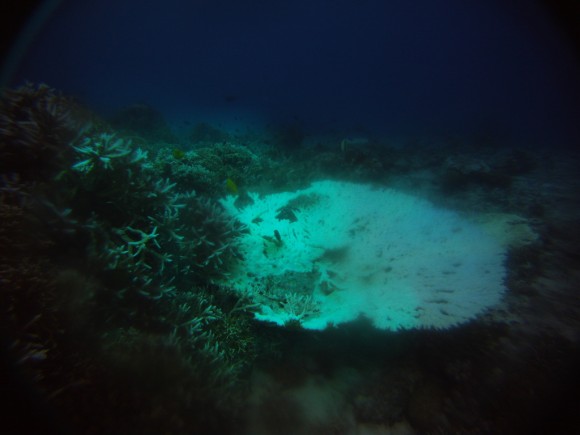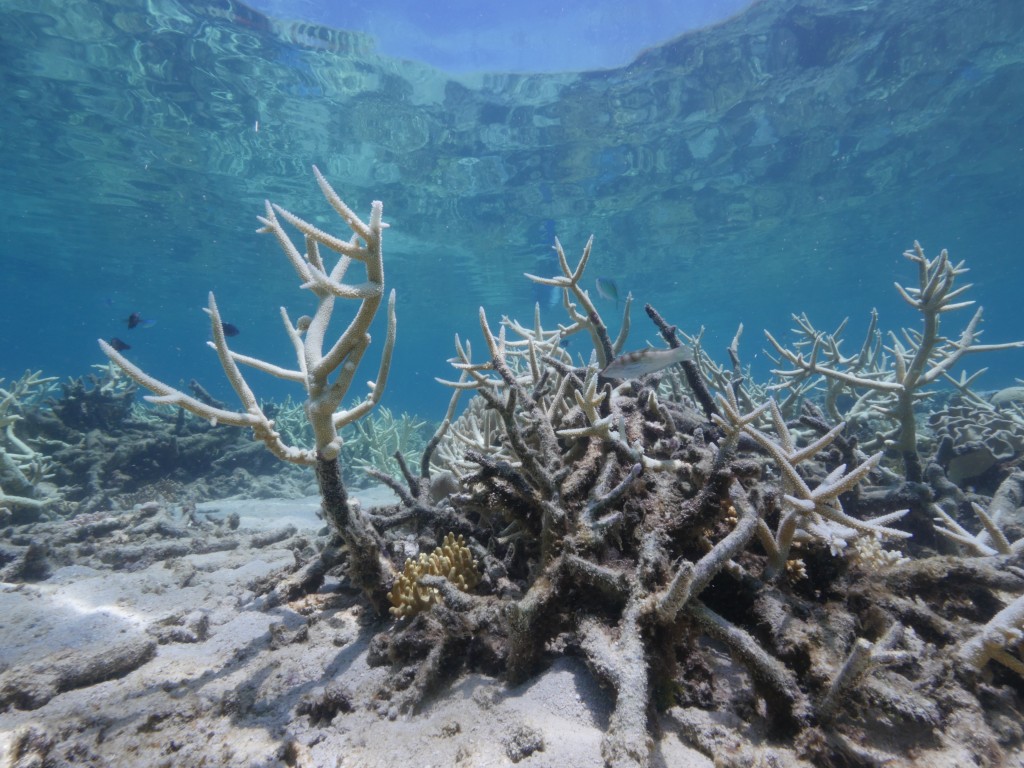Coral reefs are colorful ecosystems built by colonies of small animals and provide food and shelter to marine life. Also called as rainforests of the sea, coral reefs are sensitive to changes in water temperature which makes them fragile ecosystems.
Recent environmental news, however, offer a different picture of what coral reefs look like these days. Due to climate change and pollution among others, many coral reef systems in the world are slowly deteriorating because of coral bleaching. Corals produce algae called zooxanthellae which serves as nourishment to itself and other organisms. However, abnormal temperature changes can make the production of zooxanthellae inefficient and this may lead to corals’ undernourishment, and eventually turning white.

Our very own Tubbataha Reef, a UNESCO World Heritage Site, has fallen victim to coral bleaching, which was reported by the Tubbataha Reefs Natural Park in 2015. According to Jeric Dejucos, research assistant for the Tubbataha Management Office, white patches of corals have been observed particularly in some of the dive sites. He also added that its presence is enough cause for alarm, and that the prediction of a prolonged El Niño might cause further damage. Aside from warm waters, bleaching is also caused and aggravated by pollution, sedimentation, and the changing of the water’s pH level.
From Great to Grave
But the Philippines isn’t the only country whose marine life is threatened by the perils of coral bleaching. Australia also is faced with grave concerns as coral bleaching gets worse for the Great Barrier Reef. Recent studies show that the World Heritage site is suffering extensive coral bleaching caused by warming waters due to climate change and extreme temperatures brought about by El Niño.

According to Australian Research Council director Terry Hughes, 95 percent or about 1,000 kilometers of the world’s largest coral system is bleached. This is the third global coral bleaching that the US National Oceanographic and Atmospheric Administration declared after the first one in 1998.
A Call to Save our Seas
A global issue such as climate change requires global action, and fast. In the case of coral bleaching, different organizations, both from the government and the private sector, are joining forces to protect our these underwater treasures. World Wide Fund for Nature (WWF), one of the staunchest advocates of coral reefs preservation and front liner in the fight against climate change, calls for local action not just from locals but for all world leaders to take a stand in the fight against coral bleaching and the possible ruin of our coral reefs systems.
WWF is one of the world's largest conservation organizations, and it has more than 80 offices in different countries across the globe including the Philippines. WWF-Philippines aims to stop and eventually reverse the accelerating degradation of the environment so that tit may be a place where Filipinos can live in harmony with nature. WWF implements conservation projects to help protect some of the most biologically-significant ecosystems in Asia.
Human Nature is pleased and excited to partner with WWF-Philippines as we join forces in helping save our seas, our species, and our environment. Through this alliance, we aim to educate our fellow Filipinos how to truly care for nature and our country. Every responsible action, no matter how small, can help us impede climate change and save our seas. Be it segregating your trash, bring your own bags when shopping, or using products that are truly environment-friendly, our collective acts to halt climate change can make a big difference.
Sources:
WWF: Damaging Great Barrier Reef bleaching makes case for action
CNN Philippines: El Niño triggers coral bleaching in parts of Tubbataha Reef
The Guardian: Mass coral bleaching now affecting half of Australia's Great Barrier Reef



